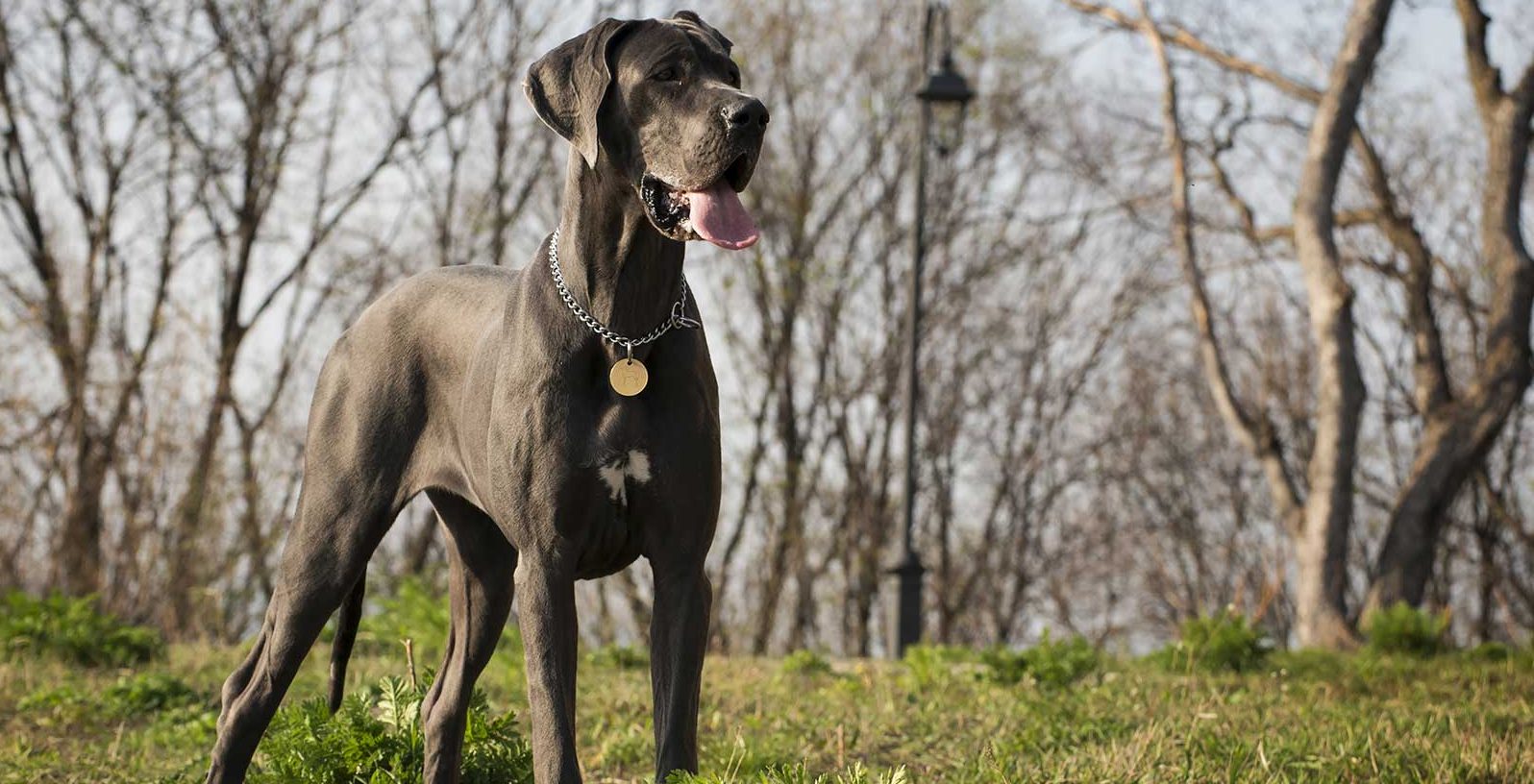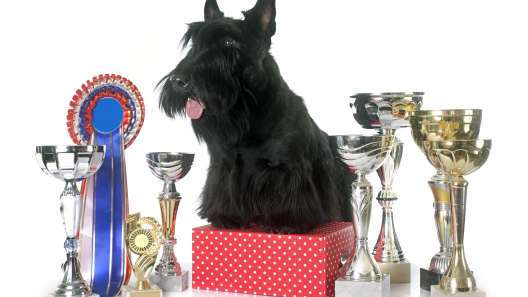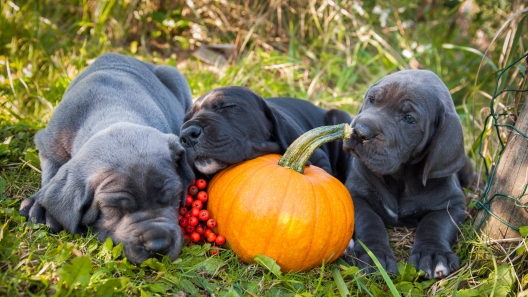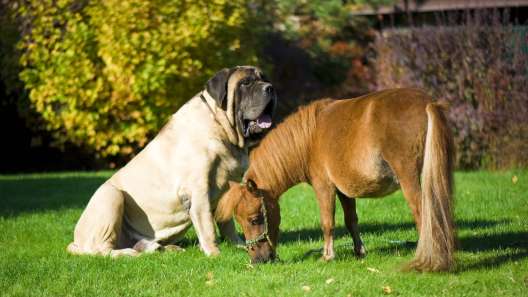-
Activity Level:
low
-
Shedding Level:
moderate
-
Grooming Level:
moderate
-
Trainability:
high
-
Good for Novice Owners:
moderate
-
Adaptability:
high
-
Kid/Pet Friendly:
often
-
Prey Drive:
low
-
Watchdog:
very alert
- Average Size: Giant
- Average Lifespan: 7-10 years
- Registered?: aca, akc
Great Dane Dog Breed Information
Overview
Temperament
Adaptability
Health
Owner Experience
Grooming
Activity Level
Size
Life Span
Did You Know?
The Great Dane has a long and noble history. Their origins likely go back further than we can currently trace. Three-thousand-year-old illustrations of canines resembling the Great Dane have been found, which indicate that these behemoth canines were revered in ancient times.
Great Danes were once called “Boar Hounds”; named for the prey they hunted. Their ears were cropped to prevent injury from angry boars. Several European countries claimed the breed throughout the 1600s.
Their name was changed to the “Great Danish” dog in the 1700s, even though it is likely that it was German breeders who developed the regal breed as we know it today. In fact, in Germany, they are called Deutsche Dogs or “German Dogs” instead of Great Danes.
The term “gentle giant” is often used when referring to the Great Dane. Although they are one of the largest dog breeds, are protective, and can look intimidating, they are known to be sweet, gentle, and affectionate dogs.
Great Danes are one of the most affectionate dog breeds and are known as one of the world’s biggest lap dogs. They will attempt to snuggle with their owners even when fully grown and will often climb into their laps or just sit on them to cuddle. When properly socialized, they get along well with children, other dogs, and other pets. They will often take a guardian role in the household.
Although they will be initially wary of strangers, they do tend to warm up once introduced. They will bark to alert you and can be prone to barking a lot if you do not train your dog to stop barking early on or if they are trained into it.
The Great Dane is a highly adaptable dog. Despite their size, they can adapt to apartment living as long as there is enough room for them to move around and they get enough daily attention and exercise. They are considered one of the best large dog breeds for small homes. They also thrive in larger homes with fenced yards where they can roam.
They do well in most climates. As with any dog, they are sensitive to heat. They also have a short, thin coat, which means they may need to bundle up in some winter dog products to stay warm while out on walks during cold months. Because they are happiest when with their favorite humans, they do not like to spend long periods of time alone.
Potential health concerns to be aware of in Great Danes can include hip dysplasia, elbow dysplasia, hypothyroidism, eye diseases, and heart disease. They can also end up with developmental disorders if they are not properly nourished as puppies. In addition to good care, good breeding practices make a big difference in the health of puppies.
Reputable breeders will screen their dogs to make sure they are not passing issues to puppies. Make sure you talk to the breeder about the health and genetic history of both parents. You can also ask about any health tests or clearances that have been done.
As a giant breed and a barrel-chested breed, the Great Dane is also at risk for bloat. Because bloat in dogs can be dangerous and become fatal if the stomach flips, it’s important to know about to reduce the risk and what symptoms to look for so you know when to get to the vet.
Great Danes are intelligent dogs that pick up on things quickly and are eager to please. They require firm, patient, kind, and consistent training. Although they are a good fit for owners of all experience levels, puppy training classes are recommended.
Because Great Dane puppies grow into huge and powerful dogs, it’s important that they are well-socialized and well-trained. In addition to reinforcing good training, other benefits of puppy training classes often include socialization opportunities.
Great Danes have a short, smooth coat that will shed a little year-round and heavier as the seasons change. Brushing weekly, brushing daily during seasonal shedding, and the occasional bath is usually enough to keep this dog’s coat healthy and looking great. In addition to coat care, you will also need to take care of your Great Dane’s nails, ears, and teeth.
Nail trims once or twice a month keep nails from growing too long and causing issues. Weekly ear checks and carefully cleaning your dog’s ears as needed can help prevent ear infections. Daily tooth brushing, plus cleanings at the vet as needed, is a good start for dental care for dogs.
Also, these big dogs have big jowls, which often makes them messy eaters and drinkers and means they are going to drool a bit. Having a drool cloth on hand for a quick wipe around their mouth after drinking or to clean up some drool can be helpful.
Great Danes can be energetic when they play, but they often sit in a lower activity range. If you let them, they can be one of the laziest dog breeds. Daily walks plus some playtime are usually enough for them, but they will likely be up for more activity if you are. Just make sure they aren’t overdoing it and that you keep things low-impact until puppies finish growing and developing.
A fully-grown Great Dane usually stands 28-32 inches tall and weighs 110-175 pounds. Some males will range higher and reach 200 pounds.
The tallest Great Dane on record was Zeus who stood 44 inches tall at the shoulders and could stretch to 7 feet, 4 inches standing on his hind legs. Atlas is a German Harlequin Great Dane that is a few inches shorter than Zeus, but weighs in at 225 pounds and holds the current record for the world’s biggest dog.
Great Danes generally live for 7-10 years on average.
The famous cartoon pooch detective and professional scaredy-dog, Scooby-Doo, was a Great Dane.








